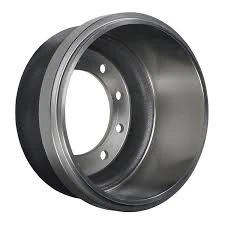
-
 Afrikaans
Afrikaans -
 Albanian
Albanian -
 Amharic
Amharic -
 Arabic
Arabic -
 Armenian
Armenian -
 Azerbaijani
Azerbaijani -
 Basque
Basque -
 Belarusian
Belarusian -
 Bengali
Bengali -
 Bosnian
Bosnian -
 Bulgarian
Bulgarian -
 Catalan
Catalan -
 Cebuano
Cebuano -
 Corsican
Corsican -
 Croatian
Croatian -
 Czech
Czech -
 Danish
Danish -
 Dutch
Dutch -
 English
English -
 Esperanto
Esperanto -
 Estonian
Estonian -
 Finnish
Finnish -
 French
French -
 Frisian
Frisian -
 Galician
Galician -
 Georgian
Georgian -
 German
German -
 Greek
Greek -
 Gujarati
Gujarati -
 Haitian Creole
Haitian Creole -
 hausa
hausa -
 hawaiian
hawaiian -
 Hebrew
Hebrew -
 Hindi
Hindi -
 Miao
Miao -
 Hungarian
Hungarian -
 Icelandic
Icelandic -
 igbo
igbo -
 Indonesian
Indonesian -
 irish
irish -
 Italian
Italian -
 Japanese
Japanese -
 Javanese
Javanese -
 Kannada
Kannada -
 kazakh
kazakh -
 Khmer
Khmer -
 Rwandese
Rwandese -
 Korean
Korean -
 Kurdish
Kurdish -
 Kyrgyz
Kyrgyz -
 Lao
Lao -
 Latin
Latin -
 Latvian
Latvian -
 Lithuanian
Lithuanian -
 Luxembourgish
Luxembourgish -
 Macedonian
Macedonian -
 Malgashi
Malgashi -
 Malay
Malay -
 Malayalam
Malayalam -
 Maltese
Maltese -
 Maori
Maori -
 Marathi
Marathi -
 Mongolian
Mongolian -
 Myanmar
Myanmar -
 Nepali
Nepali -
 Norwegian
Norwegian -
 Norwegian
Norwegian -
 Occitan
Occitan -
 Pashto
Pashto -
 Persian
Persian -
 Polish
Polish -
 Portuguese
Portuguese -
 Punjabi
Punjabi -
 Romanian
Romanian -
 Russian
Russian -
 Samoan
Samoan -
 Scottish Gaelic
Scottish Gaelic -
 Serbian
Serbian -
 Sesotho
Sesotho -
 Shona
Shona -
 Sindhi
Sindhi -
 Sinhala
Sinhala -
 Slovak
Slovak -
 Slovenian
Slovenian -
 Somali
Somali -
 Spanish
Spanish -
 Sundanese
Sundanese -
 Swahili
Swahili -
 Swedish
Swedish -
 Tagalog
Tagalog -
 Tajik
Tajik -
 Tamil
Tamil -
 Tatar
Tatar -
 Telugu
Telugu -
 Thai
Thai -
 Turkish
Turkish -
 Turkmen
Turkmen -
 Ukrainian
Ukrainian -
 Urdu
Urdu -
 Uighur
Uighur -
 Uzbek
Uzbek -
 Vietnamese
Vietnamese -
 Welsh
Welsh -
 Bantu
Bantu -
 Yiddish
Yiddish -
 Yoruba
Yoruba -
 Zulu
Zulu
stuck e brake drum
Understanding the Stuck E-Brake Drum Causes and Solutions
Having a stuck emergency brake drum can be a frustrating experience, particularly for drivers who rely on their vehicles for daily commuting or road trips. The emergency brake, or E-brake, is an essential component of a car’s braking system, designed to keep the vehicle stationary when parked. However, issues can arise, leading to a stuck brake drum, which can compromise the safety and functionality of the vehicle.
Causes of a Stuck E-Brake Drum
1. Rust and Corrosion One of the primary reasons for a stuck E-brake drum is rust buildup. Over time, moisture can accumulate in the brake components, leading to oxidation. This is particularly common in regions with high humidity or where roads are salted in winter. The rust can bind the drum to the brake pads or shoes, making it difficult to release the brake.
2. Worn or Damaged Components The various components of the emergency brake system, such as the cables, pads, and springs, can wear out over time. If any part is damaged or malfunctioning, it may prevent the E-brake from releasing properly. It is important to regularly inspect these components for any signs of wear and tear.
3. Incorrect Adjustment Emergency brakes require proper adjustment to function correctly. If the brake shoes are too tight or not correctly aligned, it can lead to sticking. Improperly adjusted brakes can create unnecessary friction, leading to increased wear and the potential for the drum to become stuck.
4. Temperature Changes Rapid temperature changes can also affect the performance of the E-brake. For example, if a vehicle is parked in extremely cold weather, the components of the brake may freeze together, preventing proper release when the vehicle is started again.
stuck e brake drum

Solutions to Freeing a Stuck E-Brake Drum
1. Inspection and Cleaning The first step in addressing a stuck E-brake drum is to inspect the brake system. Look for any visible signs of rust or corrosion on the drum and surrounding components. Cleaning the rusted parts with appropriate rust removers and lubricants can sometimes free the stuck drum.
2. Adjusting the Brake If the E-brake is sticking due to improper adjustment, it may be necessary to adjust the brake shoes. This can often be done with a simple adjustment tool, but in some cases, professional assistance may be required.
3. Replacement of Worn Parts If inspection reveals worn or damaged components, replacing them is essential. New brake pads, shoes, or cables can restore the proper functioning of the emergency brake.
4. Professional Help If the problem persists despite your efforts, seeking help from a certified mechanic is advisable. They can provide a thorough diagnosis and carry out necessary repairs to ensure your vehicle's braking system operates safely and effectively.
Conclusion
A stuck E-brake drum can be a significant inconvenience, but understanding the causes and solutions can help drivers address the issue effectively. Regular maintenance and timely inspections can go a long way in preventing such problems, ensuring that your vehicle remains safe and reliable for all your journeys. Always prioritize safety and seek professional help when needed.
-
Rear Drum Brakes Maintenance TipsNewsAug.04,2025
-
Key Components Affecting Brake Drum FunctionNewsAug.04,2025
-
Important Inspection for Truck Drum BrakeNewsAug.04,2025
-
How to Prepare for Changing Rear Drum BrakesNewsAug.04,2025
-
Essential Tools for Cleaning Drum Brakes ProperlyNewsAug.04,2025
-
Brake Drum Function GuideNewsAug.04,2025
-
Safety Features of Red Brake DrumsNewsAug.01,2025
